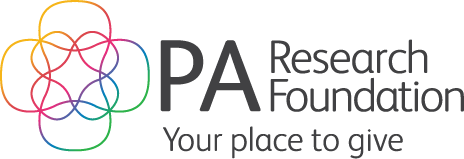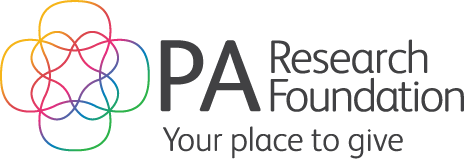
Head and Neck Cancers in Australia: Advancing the Fight for a Healthier Future
The Problem
Imagine a world where the very act of swallowing or speaking becomes a challenge. This is the reality for those battling head and neck cancers, a diverse group of malignancies that originate in the sinuses, nose, mouth, salivary glands and throat.
Each year in Australia, over 4,500 individuals are diagnosed with head and neck cancers. Men make up 73% of these cases, while women account for 26%. Unfortunately, these cancers are often not detected until they reach an advanced stage. According to the Australian Institute of Health and Welfare, the five-year survival rate for these cancers stands at 70%.
|
Estimated number of new cases of head and neck cancer diagnosed in 2022: |
4,500+ |
|
Estimated % of men among new cases: |
73% |
|
Five-year survival rate: |
70% |
Why We Are Fighting It
At the PA Research Foundation, we are committed to advancing treatment and improving the outcomes of patients with head and neck cancers. Our goal is to support innovative research and cutting-edge treatments that provide hope for those affected by these diseases.
Types of Head and Neck Cancer and Possible Causes
Head and neck cancers are often grouped together due to their similar treatment approaches. Some of the most common symptoms include persistent pain, swelling, sore throat, coughing, difficulty swallowing, bad breath, and unexplained weight loss.
The primary risk factors for head and neck cancers include:
- Tobacco Use – A leading cause of these cancers.
- Alcohol Consumption – Another major contributor to the development of these malignancies.
- Human Papillomavirus (HPV) – An infection linked to certain types of head and neck cancers.
Men over 40, along with Aboriginal and Torres Strait Islander people, are particularly at risk. Early detection and timely treatment are essential for improving patient outcomes.
Our Investment and Commitment Over the Years
Close to $500,000 Our investment in groundbreaking studies and innovative treatments ensures that we are at the forefront of improving outcomes for patients across Australia. Plus $150,000 co-funding for a new Directive of Research
Innovative Research Leading the Way
Squamous Cell Carcinoma (SCC) is one of the most prevalent forms of skin cancer in Australia, and it can be deadly, especially when it spreads to deeper tissues. While surgery and radiotherapy are common treatments, newer therapies like immunotherapy are showing promise in improving patient outcomes.
Dr. Jazmina Gonzalez Cruz and her team’s pioneering project on the efficacy of immunotherapies and personalised medicine strategies for oropharyngeal cancers, similarly aims to develop tailored treatment approaches. Leveraging cutting-edge technology to detect gene and protein expression within tissue samples, they hope their efforts will work towards the betterment of patient care and outcomes.
As one of the world’s foremost experts in perineural spread and a renowned ear, nose, and throat (ENT) surgeon, Professor Ben Panizza has also worked with the PA Research Foundation for more than a decade to help drive better outcomes for cancer patients. Prof Panizza has several research projects all at different stages happening at present, including work with Associate Professor Fiona Simpson on shifting surface receptors so the body’s immune system identifies and targets tumours better, with a particular focus on adenoid cystic carcinoma.
Dr. Duncan Lambie and Professor Phil Robinson are likewise exploring the use of proteomics to understand perineural spread in squamous cell carcinomas. Perineural spread is a condition when squamous cell carcinomas (SCC) or other skin cancers spread to deeper tissues and infiltrate large nerves. This study is a collaboration between the PAH’s Head and Neck and Skull Base Surgery Unit, PA Department of Anatomical Pathology and the ProCan team.
A Patient’s Story
For patients battling head and neck cancer, the journey is personal and deeply challenging. Yet, the advancements in research offer new hope. Immunotherapies, such as those introduced by Associate Professor Rahul Ladwa, have changed the landscape of treatment for many patients with advanced cancers.

Louise's Head and Neck Cancer jouney
Louise Christie has stared down three head and neck cancer diagnoses in just two years, and thanks to the PA Hospital the proud Gold Coast mum of two is now considered cancer free.
Louise had what she thought was a bad head cold one day in 2015 and made an appointment with her GP who prescribed a nasal decongestant. When she sprayed the decongestant into her nose it led to her coughing up blood and a small lump of tissue and her nose started bleeding profusely leading to a trip to emergency on the Gold Coast where Louise lives.
Staff at the Gold Coast Hospital took a biopsy of the small piece of tissue Louise had coughed up, with the results coming back as a cancerous squamous cell carcinoma. That would be the first time she learned she had sinus cancer, a form of head and neck cancer she had never even heard of prior to her diagnosis.
Louise would have two more operations on the Gold Coast before radiation therapy at the PA Hospital, which would be the first interaction with the hospital that would eventually help her beat her cancer.
“I had an operation to remove what was left of the carcinoma and then I had another operation a week later where they went in and took a wider perimeter,” Louise said.
“It came back again a year later so I ended up at the ENT (ear, nose, throat) department at the PA Hospital where they considered the next step and decided on six weeks of radiation and another operation at the Gold Coast Hospital.
“I ended up losing my smell and my taste. Head and neck radiation is a very hard thing to go through it ulcerates everything.
“A year later it came back again, it was my third diagnosis in the space of two years, so I went back to the ENT department at the PA.
“I was told that is where you go when it gets troublesome and keeps coming back. I was put under Dr Bowman and had a 12 hour surgery where they removed the majority of my sinuses and took a bit of tissue from my leg and put it up into my head.”
The mammoth surgery at the PA was successful and Louise has had regular follow up appointments and monitoring by MRI imaging, but since earlier this year she was given her five year clearance by the team at the PA.
Through treatment for all three diagnoses Louise stayed strong for her two daughters Zara and Lawrie, who were just 16 and 14 when she was first diagnosed. With that scary period of their lives now over, Louise wanted to give back to the hospital that helped her to see her daughters grow into adulthood.
“I used to set myself goals like I need to get my kids to 18, then to 21, and I kept moving the bar because there is never I right time to leave people,” she said.
“I chose to deal with it only when I had to because of appointments or treatment. I didn’t want to give it any more power over parts of my life and maybe that was because I am a parent, and I was thinking of my children and trying to distance them a little bit from it.
“The ENT team at the Gold Coast Hospital were great but when they referred me to the PA both times, they reassured me and said you’re going to where we send the difficult cases, the team at the PA are the top of the game,” she said.
“They said we’ve done as much as we can here but don’t be scared because we are sending you to the best of the best and it’s where people go where when we can no longer help you here.
“I now support the PA Foundation because I wanted to give back to the place that helped me out so much. I donate to the Foundation on a regular basis, and I donate to the Cancer Council as well and I’ll continue to do that because it’s thanks to the PA that I’m still here.
“I cannot praise the PA and how they managed my care enough. I went in for a 12 hour operation and I thought I’d be there for two weeks, I was out and home within five days. That was just amazing. I got to recover more at home because of the fantastic job they had done.”
Louise now has a new lease on life thanks to the PA and part of the reason she gives back and lives with renewed zeal for life is for the other patients she met along the way.
“Reaching my five year clearance was an amazing moment but also a bit bittersweet because you do come across people at clinic and then one day they’re not there. There is a bit of survival guilt because I’m so grateful to be here, but you realise other people haven’t been as lucky even though they fought just as hard.
“The whole journey has been full of highs and lows, but it has given me the biggest gift in that I truly appreciate my life now. I live much more in the moment and get more enjoyment out of the everyday things, and I realise how important it all is.
“I live that little bit extra for the people I’ve met along the way.”
The Power of Research and Charitable Support
At the PA Research Foundation, the support of donors has been critical to the progress we’ve made in head and neck cancer research. Professor Panizza emphasizes the role charitable funding plays in making breakthroughs possible.
"The foundation has been crucial to my work," says Prof Panizza. "Without seed funding from the Foundation, research like ours simply wouldn’t happen."
Dr. Cruz also highlights the importance of charitable donations, explaining that innovative tools and technologies often come with a high price tag initially. However, with the support of donors, these tools can become more accessible and widely used, leading to better outcomes for patients.
“It is expensive now. Every new tool is expensive until everybody uses it. So, the more people use it, the more people are aware that this technology exists and the applicability in the clinic, the cheaper they’ll get,” she said.
A Brighter Future for Head and Neck Cancer Patients
Thanks to the generosity of our supporters and the tireless efforts of our researchers, we are making real strides in the fight against head and neck cancers. With continued innovation, collaboration, and support, we can drive more breakthroughs and offer new hope to those affected by this devastating disease.




